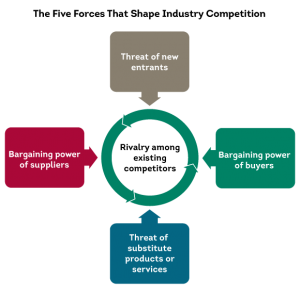2018: The Year of AR, VR? Don’t Hold Your Breath
Now that live streaming has gone — well — mainstream(ing), the social community can turn its attention to another horizon of white space.
Nothing excites me more than the use of augmented and virtual reality in the digital media space. AR/VR give marketers the opportunity to bring experiences and information to consumers faster, eliminating clunky installations and travel times previously required for a demo or event. AR/VR will eventually be more than a forward-thinking idea for companies, however, there are barriers that make that easier said than done.
There are two things that need to happen to bring AR/VR into the mainstream. First, the technology used to create these experiences needs to become more affordable. This will require time and investment from larger, more technologically advanced companies, who can make the technology more adaptable for smaller companies to implement.
Marketers will also need to know how to use the technology. There is an understandable learning curve when it comes to creating and implementing AR/VR experiences, and companies need to allow time for training to learn how to incorporate these digital marketing advancements into daily practices.
As a scrappy digital marketer, I know how difficult it can be to fight for funds required to move forward with even the smallest changes in campaign content, and the investment, in both time and funds, involved in implementing the technology behind AR/VR is not an easy sell to executives who need to see immediate ROI.
There are many marketers who fully understand the potential, but we must find a way to bridge the two worlds of exciting, expensive technology and traditional marketing. There are, in fact, many companies who will take a risk to invest in expensive technology, realizing the potential they have to positively impact sales, consumer experience and time spent by marketing teams. However, AR/VR are understandably taking longer to implement.
Because of the investment required, and the “trickle-down effect” that needs to come from established companies to make the technology easier to implement, 2018 likely won’t be the year that AR/VR becomes mainstream. However, we are starting to see the beginnings of how the technology can benefit marketing campaigns. Companies are already beginning to shift social media-focused roles to include AR/VR, and you may have already experienced a VR campaign on Facebook that feels as though you are at an event or working with a new product.
We are seeing the potential for this technology to be implemented into industries such as home building and airline travel. As a consumer, how exciting is the prospect of being able to see what your future home will look like before it’s built, through a device? In addition to providing benefits to customers, there is the potential for businesses to save money that is spent on travel to the site, staging and modeling demo homes.
Another example is in the airline industry — instead of having to ground a plane to create visual content, marketers can create AR/VR footage that highlights the experience at a lower cost for use in commercials and social media. The benefits and future use cases take understanding and investment, but the first step is to see the exciting potential in the opportunity that lies ahead.
AR/VR are not the first advancements that have taken marketers years to embrace fully, and they won’t be the last. The creative potential and timeline for unleashing the technologies into campaigns depends on the type of industry the company is playing in, the size and funding of that organization, and value for their customers. However, my hope is that digital marketers can work together to propel the industry forward and slowly embrace this technology, which is bound to make exciting progress and eventually become widespread by … 2019?
(26)







